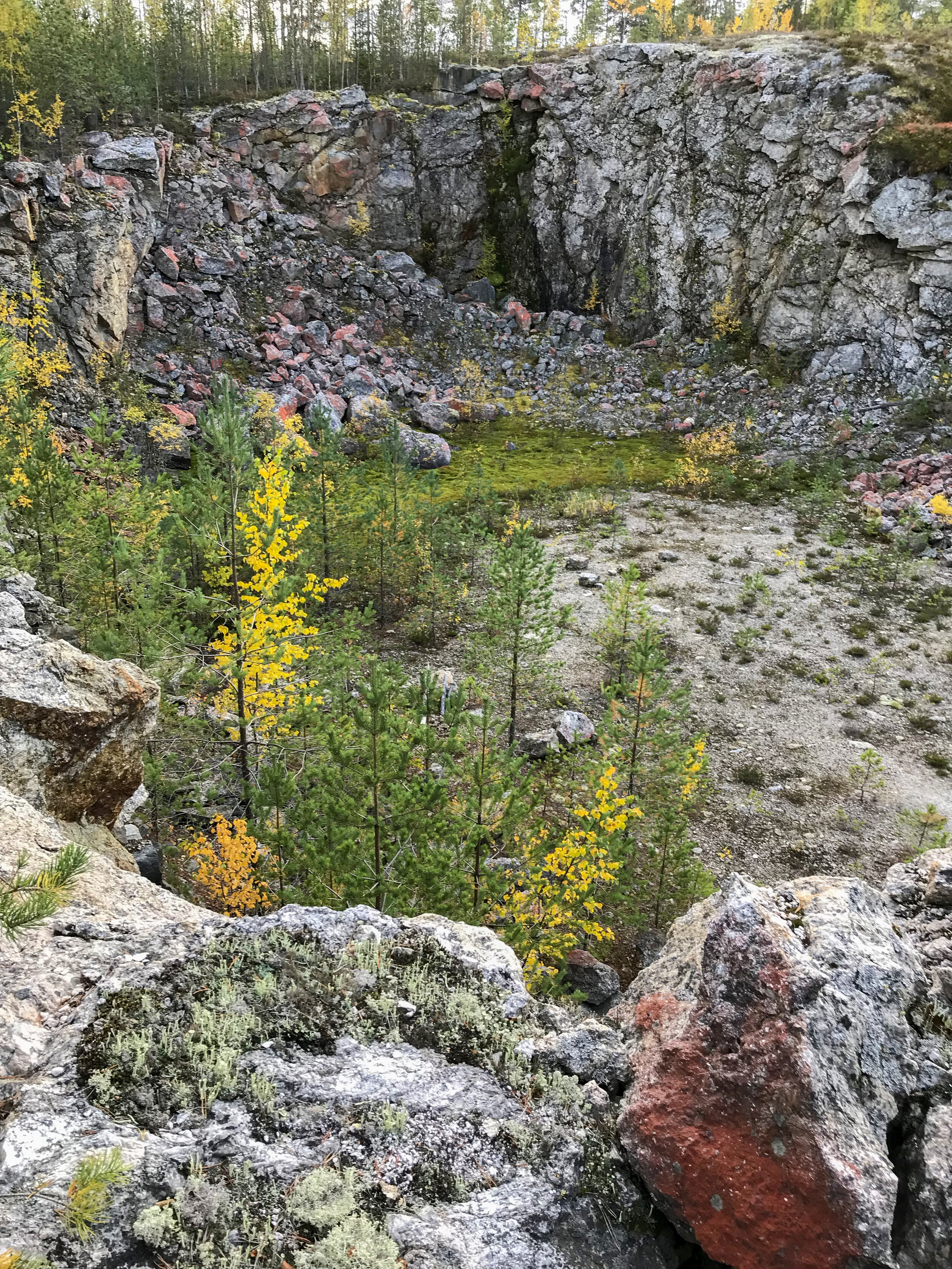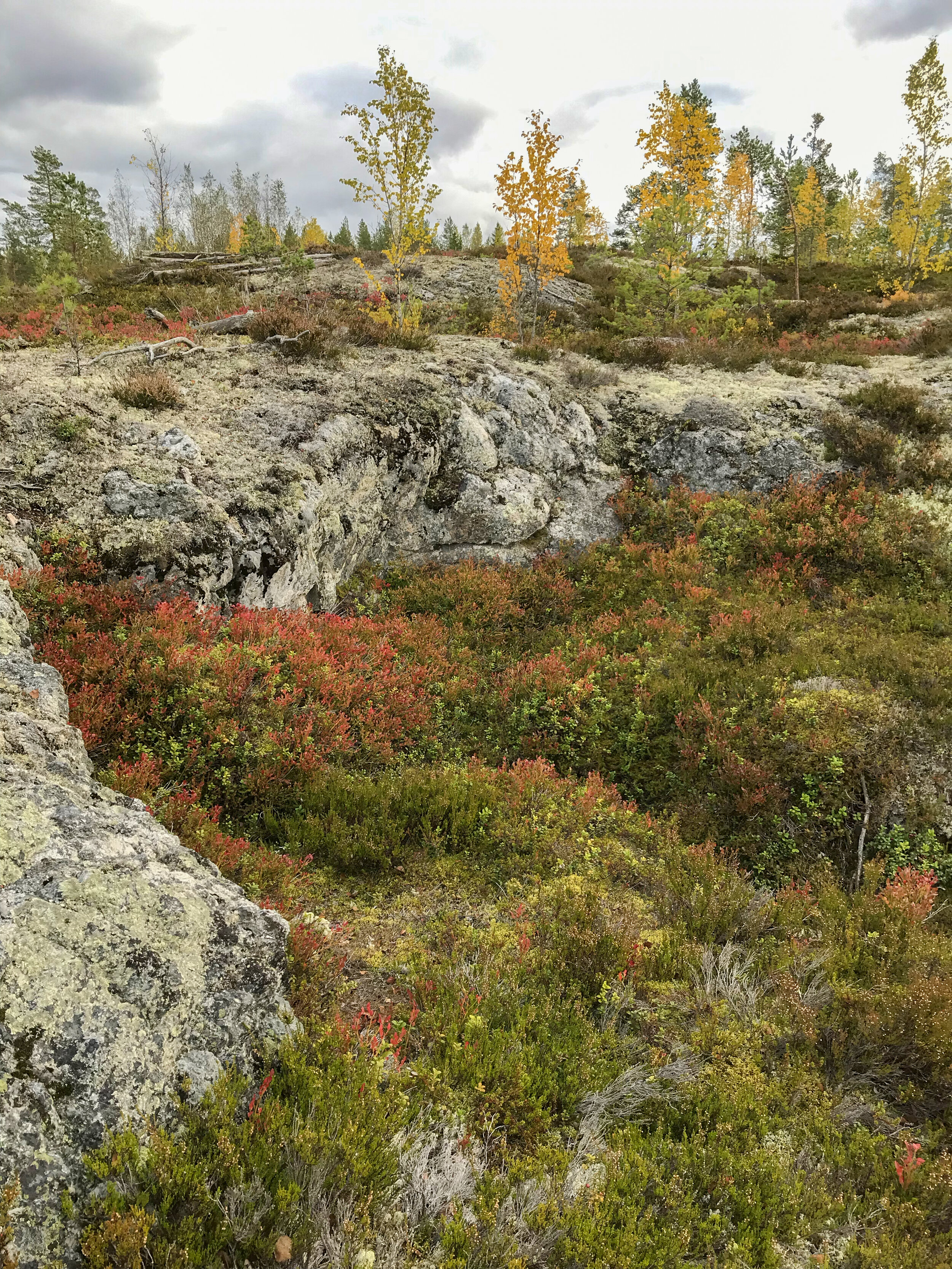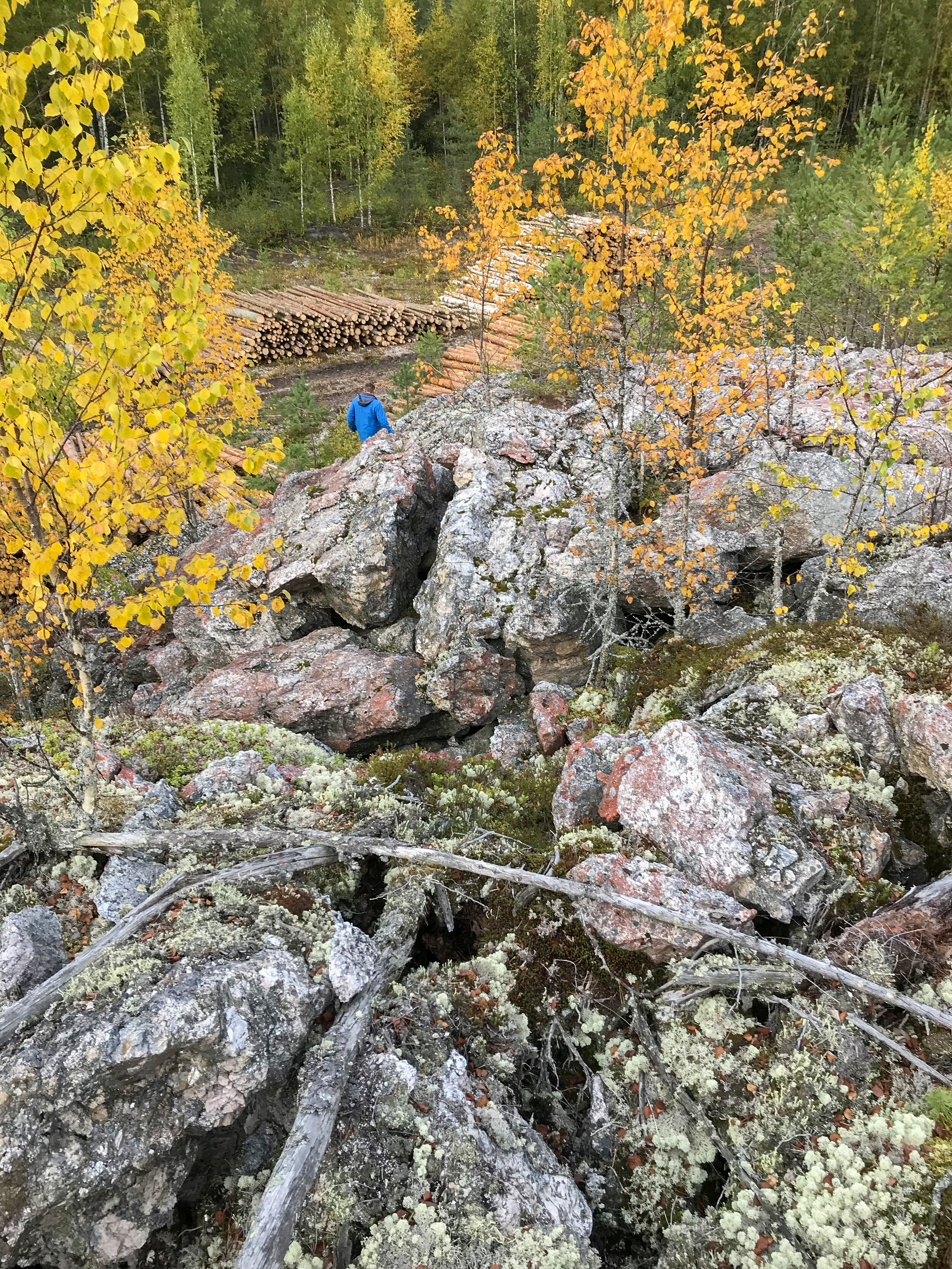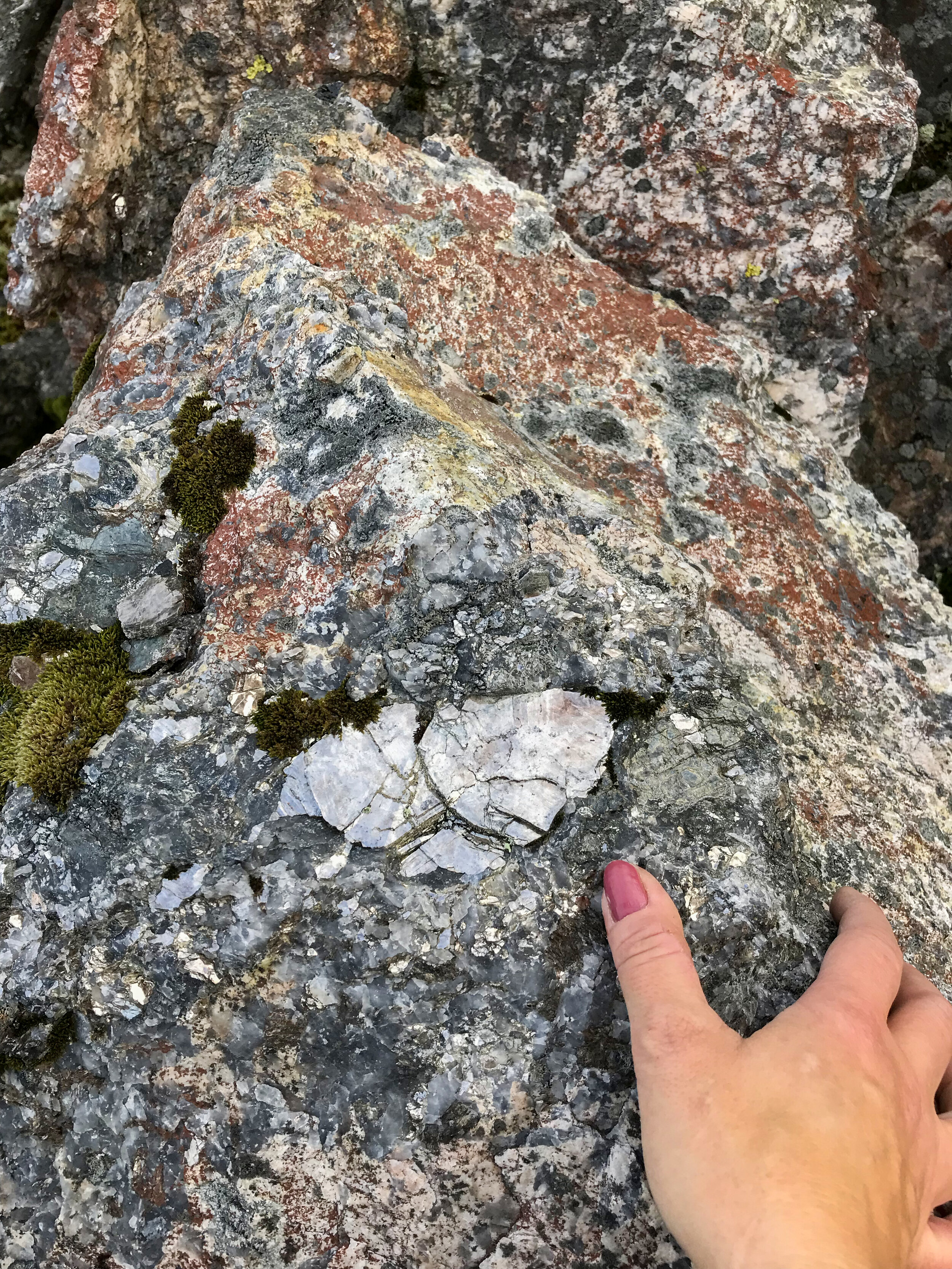VUORENKURU - AN UNIQUE EXPERIENCE
Vuorenkuru is located in Lappajärvi, classified as nationally important outcrop by the Finnish Environment Institute. No need to wonder why!
Vuorenkuru is a breathtaking experience.
It is important to mention that that there are no maintained trails or protection on the steep edges around the area. It is important to be careful when visiting the area and not to let your kid run freely around it.
Vuorenkuru is a special place and is definitely worth visiting.
Rocks of Vuorenkuru
The bedrock of Vuorenkuru is made of pegmatitic granite, which is one of two main rock types in the Craterlake area.
Pegmatite is a very coarse-grained rock. In other typical rock types the blocks of rocks, I.e minerals, have diameters of millimeters up to couple of centimeters. However, in pegmatites, the minerals can be several meters in length.
Pegmatites consist of three different minerals, quartz, feldspar, and mica. Pegmatites can also contain minerals from rare elements, many of which are jewels or gemstones.
The pegmatites of the Craterlake area were formed about 1,900 million years ago in the bowels of the Karalides that crossed central Finland from northwest to southwest. Erosion has removed kilometers of stone layers and exposed pegmatites to the surface.
Vuorenkuru pegmatite contains graphic granite which can be used as a gemstone. It is adhesion of two minerals - feldspar and quartz.
Quartz being surrounded by feldspar, create patterns resembling the Arabic writing.
In some places Vuorenkuru pegmatite also contains large crystals of white mica or muscovite. It occurs as translucent crystals which, unlike other typical minerals, are elastic: when the muscovite flake is twisted, it bends and returns to its original shape. In places, tens of centimeters in width of quartz veins cross the Vuorenkuru pegmatites.
In addition to pegmatite, the second main rock type of the area, mica schist, also occurs in some places in the Vuorenkuru area. For example, on the eastern wall of the quarry you can see a gently folded large fragment of mica schist.
Other things to see
The slopes of Vuorenkuru are intersected in many places by few meters wide and up to 5 m deep ravines. These are fractures in the pegmatite, later enlarged by erosion processes and cleaned from loose debris by running water.
Walking around the quarry, you can experience stunning scenery reminiscent of Lapland.
IMPORTANT! There are no maintained paths from the quarry to the top of Vuorenkuru.
More information: Craterlake Geotrail, destination 3
Location: Google Maps -link














